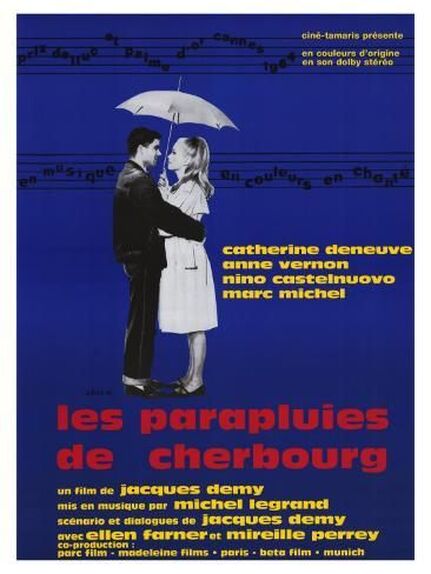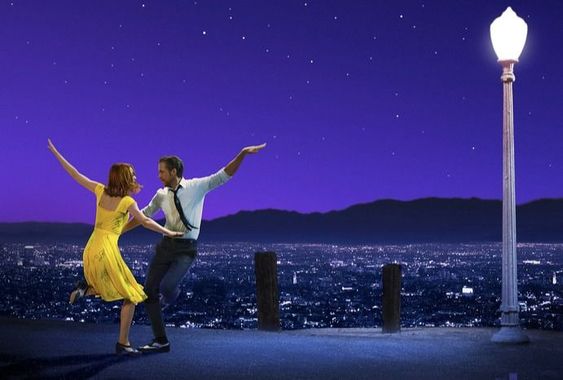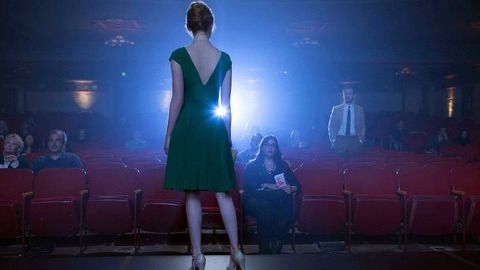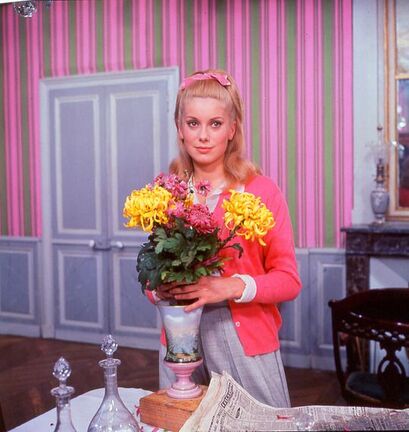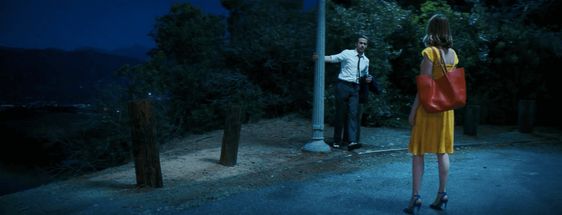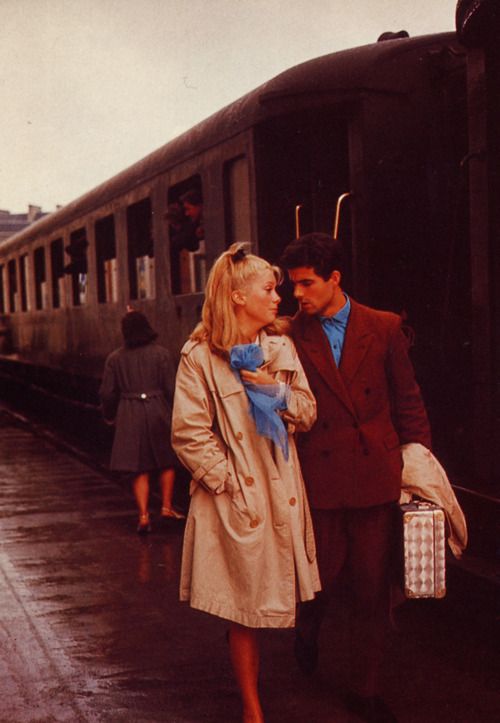Jacque Demy's Masterpiece The Umbrellas of Cherbourg
|
I love La La Land (2016, Damien Chazelle). I know it’s not a perfect film, but in a world filled with cookie cutter super heroes, countless & thoughtless sequels & shock horror films, La La Land should be applauded simply for its ‘different-ness.” It’s a throwback, to be sure, but the pure joy evident from its opening frame is too much to ignore & too much for me not to love it. Why open with a 5-year old film this week? Thank my daughter for that. She decided she wanted to watch La La Land & how could we say no to joining her? I had watched it with her just a COVID began, so it was still relatively fresh in my mind, but I still couldn’t help having that wonderful feeling of seeing something so joyous. The color palette, the songs, the understated performances, but mostly the pure love for Los Angeles & movies are what drive my enjoyment. La La Land captures LA’s foiables, without being cloying, & depicts the dehumanizing underside of the Hollywood dream, without detracting from very Hollywood premise of the story.
Director/writer Damien Chazelle spent a fair amount of time talking about Jacque Demy’s 1964 groundbreaking musical The Umbrellas of Cherbourg when he was out promoting La La Land. He routinely cited the film as his inspiration and in re-watching Umbrellas this week it’s a pretty simple leap to see its influence. But in looking more deeply & reading more about what both directors have said about their respective films an intertwining between the 2 films become even more clear. All this is to say that while Demy’s film is an all-time classic, La La Land is as different & inspiring as Umbrellas was in its time. |
The most evident similarity between the two films is the color palette of bright, vibrant primary colors that saturate the screen in décor, costuming & set decoration. In Umbrellas Guy’s (Nino Castelnuovo) primary color is blue, while Genevieve (Catherine Deneuve) varies from yellow, to white, & soft pink, depending on her mood or place in the story. Exterior walls are given texture in bright solid colors, surrounding the 2 lovers as if framed in a picture. Demy said that he & production designer Bernard Evein’s desire was to create a “singing Matisse.” Similarly, interior walls are often covered with patterned wallpaper, once even extending that pattern to one of Genevieve’s dresses. As with Matisse, the colors create the mood, while the meaning is sometimes hidden in plain sight. Chazelle mimics this in more muted fashion, but utilizes bold color in Mia’s (Emma Stone) costumes & set backgrounds. Outfitting Mia in a canary yellow dress during her & Sebastian’s (Ryan Gosling) first meeting reflects directly to Guy & Genevieve’s first kiss on the street in her yellow rain coat. Color, then, is the basis to convey mood & meaning in both films & links them for the boldness & vibrancy.
Demy’s groundbreaking use of completely sung dialogue can be jarring at first, but Umbrellas brilliant composer Michel Legrand utilized the “smooth phrasing” of jazz to make the dialogue flow melodically. Lagrand was a Jazz pianist in the 1950’s before turning to scoring several of Demy’s best films. As both a plot point & the underpinning of the musical score for La La Land, composer Justin Hurwitz also used Jazz phrasing in the music, but relied on Jazz’s improvisational style to make points & counterpoints in the score. In both cases, the fundamental use of the music is to flow from one character to another and from one scene to another to create a sound landscape that reenforces the story without a break. Whereas Lagrand’s score flows under the sung dialogue throughout, in a calculated attempt to shift away from the standard movie musical plot/song/plot/song structure, Hurwitz’s Academy Award winning score remains low key under the spoken scenes, but then punctuates the song breaks in a more traditional sense.
If Chazelle had just borrowed the visuals & the sound from The Umbrellas of Cherbourg, La La Land would still be a direct descendent, but he also took several plot points & transposed them from late 1950’s France to modern Los Angeles. As Demy set out “to make people cry” with his story of doomed young lovers, Chizelle has a slower burn of a flawed, but intense relationship, then cruelly fast forwards to the final “what if” montage. That both final scenes are nearly free of dialogue encapsulates the purity of love & love lost between both couples. Chazelle’s ‘what if’ montage only hammers the point home more obviously, but Demy’s subtlety hits just as close to the heart, perhaps even more so.
If Chazelle had just borrowed the visuals & the sound from The Umbrellas of Cherbourg, La La Land would still be a direct descendent, but he also took several plot points & transposed them from late 1950’s France to modern Los Angeles. As Demy set out “to make people cry” with his story of doomed young lovers, Chizelle has a slower burn of a flawed, but intense relationship, then cruelly fast forwards to the final “what if” montage. That both final scenes are nearly free of dialogue encapsulates the purity of love & love lost between both couples. Chazelle’s ‘what if’ montage only hammers the point home more obviously, but Demy’s subtlety hits just as close to the heart, perhaps even more so.
For me movie musicals that break molds are always more fascinating & enjoyable than those that repeat safe patterns & stories. The bold dancing of Gene Kelly is always preferred to the refined movements of Fred Astaire, just as Moulin Rouge’s use of pop songs is more interesting than Cats sweeping melodies. Here, however, in talking about The Umbrellas of Cherbourg & La La Land, there is a distinct difference in the approach, but the same root beliefs. There is familiarity in La La Land in structure, but a boldness in style that makes it unique. Umbrellas, however, offers nothing like what came before & that makes it a classic. Like I said, I really like La La Land, but The Umbrellas of Cherbourg is the original; the real deal!

